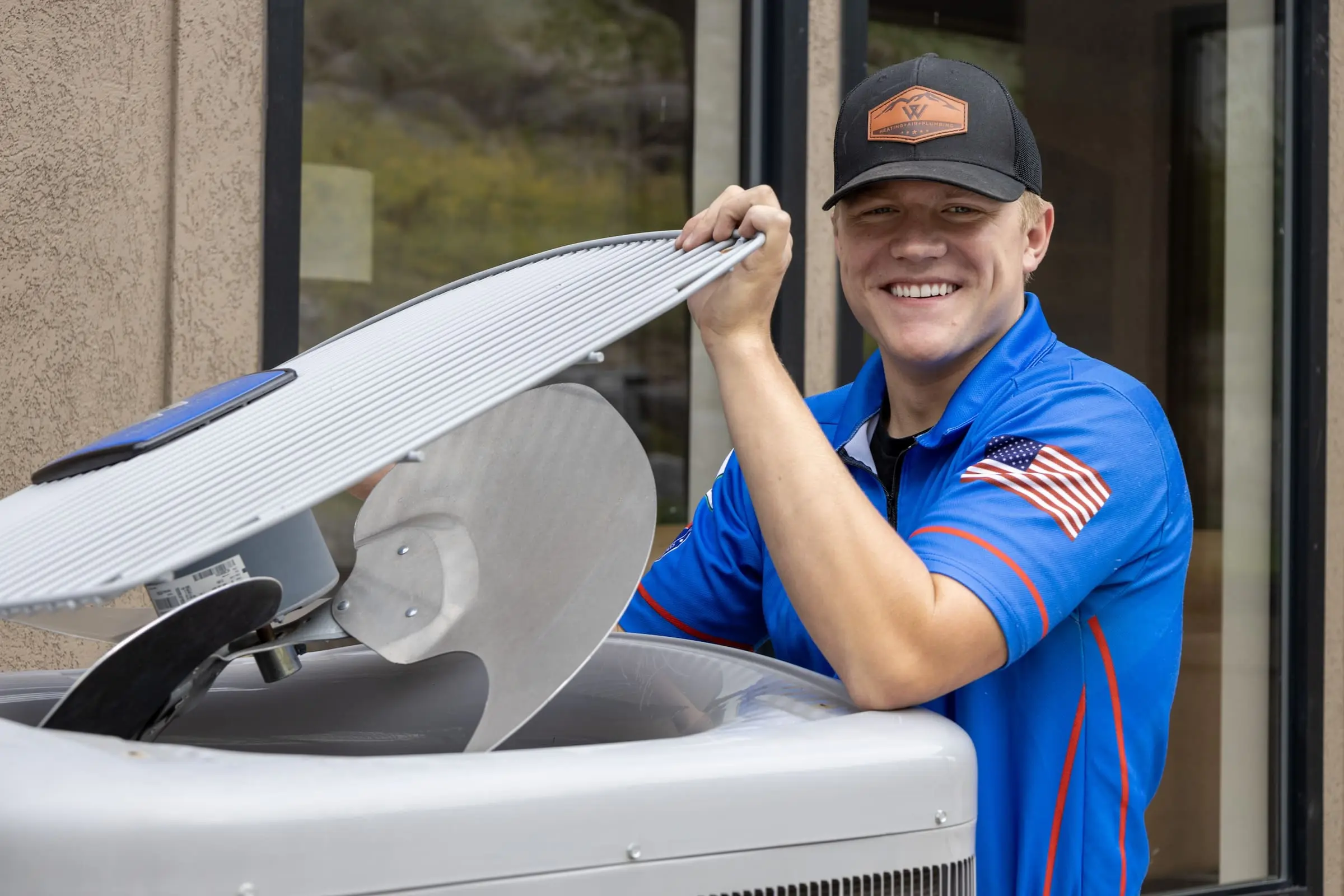A Complete Guide to Furnace Maintenance
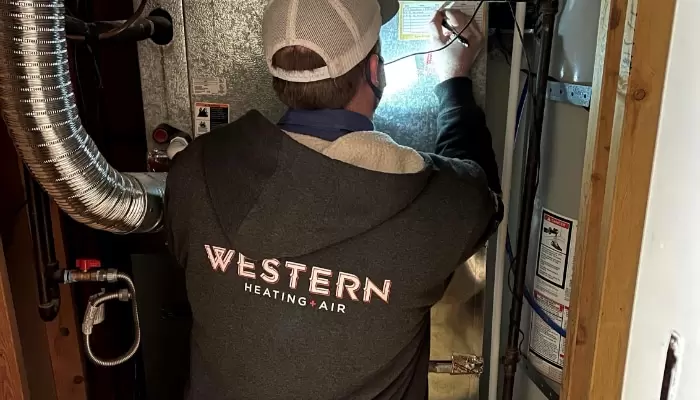
Call Western Heating, Air & Plumbing for Heating Maintenance Today
When winter rolls around in Salt Lake City, Utah, you expect your heating system to keep you and your family warm. The best way to make that happen is with regular furnace maintenance. By servicing your gas or electric furnace, you can prevent breakdowns, increase energy efficiency, and prolong the lifespan of your system.
At Western, we aim to help Utah homeowners maintain their furnaces and ensure they are in prime condition before freezing temperatures creep in. That’s why we created this guide to furnace maintenance.
In this complete furnace guide, we cover:
- What Is Furnace Maintenance?
- Common Types of Heating Systems
- Signs You Need Furnace Maintenance
- A Comprehensive Furnace Maintenance Checklist
- Benefits of Regular Furnace Maintenance
We will also include information on when professional furnace maintenance is required and how our expert HVAC technicians can help. Follow along to learn about how to keep your home warm, your energy bills manageable, and your family safe this winter.
What Is Furnace Maintenance?
Furnace maintenance, or furnace servicing, is the process of regular upkeep through simple and cheap cleaning and inspection tasks. It can be a DIY task, or you can enlist the help of HVAC professionals. At Western, we offer furnace maintenance, repair, and installation services.
Repairs can be costly—maintenance is affordable. That’s why it’s important to do it regularly: so you save yourself time and money in the long run.
Types of Heating Systems
Most homes are heated by either an electric or gas-powered furnace. However, there are multiple common heating systems and furnace types, such as:
- Heat pumps
- Electric furnaces
- Gas furnaces
No matter your heating system type, regular maintenance prevents issues and secures heat for your home and family when you need it most.
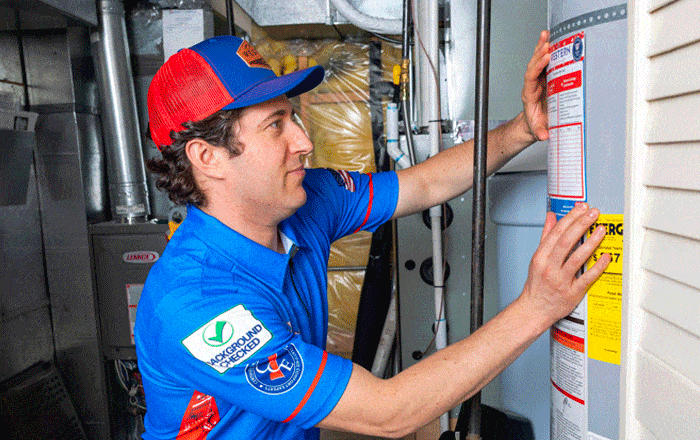
Essential Components of a Furnace
You can refer to this list of essential furnace components when performing inspections and maintenance. Keep in mind that every furnace is different, so you should refer to your user manual to ensure proper care and keep its warranty valid.
- Access or Service Panel: A removable cover that provides access to internal furnace components for maintenance and repairs.
- Air Filter: A component that traps dust, dirt, and debris from entering the furnace.
- Blower Fan: A fan that pushes heated air from the furnace into the home’s ductwork.
- Blower Motor: A motorized fan that circulates heated air throughout the ductwork and into the home.
- Burner: The part of the furnace where the fuel mixes with air and ignites to generate heat.
- Combustion Chamber: The section where fuel combustion occurs, generating heat for the system.
- Drain Pipes (Condensate Line): A drainage system that removes condensation produced by high-efficiency furnaces to prevent water buildup.
- Exhaust and Venting System: A system of pipes and vents that safely expels combustion gases from the furnace outside the home.
- Flame Sensor: A safety device that detects when the burner flame is lit and shuts off the gas supply if no flame is present.
- Gas Supply Valve: A valve that controls the flow of natural gas or propane to the furnace for combustion.
- Pilot Light: A small flame in gas furnaces that ignites the burners to produce heat.
- Safety Shutoff and Emergency Switch: A safety feature that allows homeowners to quickly turn off the furnace in case of emergency or malfunction.
- Vent Caps: Protective covers on furnace exhaust vents that prevent debris, animals, and blockages from interfering with airflow.
Signs You Need Furnace Maintenance
Inconsistent Heat
When your furnace is not providing sufficient air, it’s often a sign that it needs maintenance. Before scheduling a repair, see our furnace checklist below to see if you can resolve poor and uneven heating. Other reasons you experience inconsistent heating could be dirty air filters, a broken thermostat, or a deeper problem within the system.
Unusual Noises
You can usually hear your furnace kick on, and you may notice it makes a low humming sound when running. However, if you hear banging, screeching, squealing, or other unusual noises, we recommend turning off your heater and checking its components. The noises may be due to a loose connection or damaged internal parts.
Unusual Smells
If your heater lets off unusual smells, there’s a sign that something is wrong. If you smell rotten eggs, burning rubber, or anything else odd, turn off your furnace and make sure all the filters are clean. You may need the help of a professional if these maintenance tasks don’t help the smell.
Frequent Cycling
If your furnace frequently turns on and off, it’s going through cycles that damage the system and increase energy bills. This can happen for many reasons, such as a clogged filter or issues with the thermostat—so performing maintenance should be first on your to-do list to fix frequent or short cycling. If basic maintenance doesn’t help, it’s probably time to call the professionals.
Yellow or Flickering Pilot Light
The pilot light should be bright blue if you have a gas furnace. If you see a yellow, orange, or flickering pilot light, then it could indicate a carbon monoxide leak. You should turn off your system immediately and call a professional HVAC company for maintenance or repairs. There could be a problem with the gas mixture or some other internal component.
Increased Energy Bills
When your furnace is working harder than it needs to, is old, or needs repair, you may see an increase in your energy bills. This is another reason why regular furnace maintenance is so important—it saves you money monthly and in the long run.
Poor Indoor Air Quality
When you forget to change your air filters, dust, dirt, pet hair, dander, and other debris get stuck in your ductwork and heating system, causing poor indoor air quality.
Furnace Maintenance Checklist
The following maintenance tasks involve complex competents and, if performed incorrectly could cause damage to your furnace, your home, or result in personal injury. If you are unsure about any step, we strongly recommend contacting the professionals at Western. Our expert team can ensure your system runs safely and efficiently with an annual furnace tune-up and inspection.
Check and Replace the Air Filter
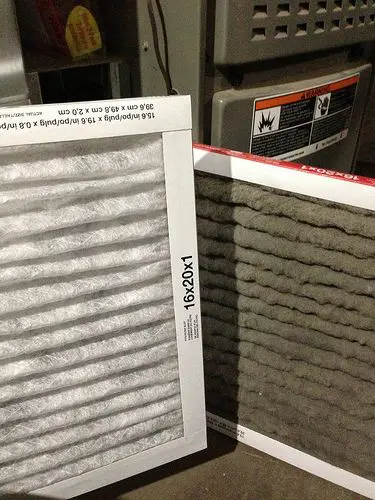
Like your air conditioner, you should change your furnace’s filters regularly. We suggest doing it about once every 2-3 months. To replace or clean your furnace’s air filters, start by turning off the furnace and removing the service panel. Locate the filter compartment, usually near the blower fan or air intake, and slide out the old filter.
If your furnace uses a disposable filter, insert a new one and ensure it aligns with the correct airflow direction. Clean washable filters according to the manufacturer’s instructions before reinstalling them. Once the new or cleaned filter is in place, put the service panel back on and turn on the furnace.
Test the Safety Shutoff and Emergency Switch
After changing or cleaning the furnace’s filters, you must shut down the system before continuing maintenance. Turn off the electricity to the furnace at the main circuit breaker for electric furnaces. Find and turn off your furnace’s fuel and gas supply valve for gas furnaces.
It is critical to know how to turn off your furnace and test its emergency switches. If you’re unsure how to do this even after reading our guide, refer to your furnace owner’s manual or contact a local pro to teach you.
Clean Furnace Surface and Combustion Chamber
Cleaning the combustion chamber and furnace burners can improve your furnace’s performance and indicate if there are signs of poor combustion.
First, remove the furnace chamber access doors and any burner covers. Then, use a wire brush and a shop vac to remove built-up carbon, soot, and debris. Lastly, check the chamber for any visible signs of corrosion or damage.
Check the Pilot Light
If your furnace isn’t heating properly, a faulty pilot light or ignition system could be the cause. For gas furnaces, the pilot light flame should always be blue. If it’s yellow, flickering, or completely out, it may indicate incomplete combustion, which can produce carbon monoxide. If you experience headaches or dizziness, turn off the unit, call a professional, and evacuate immediately.
A pilot light that won’t stay lit may be due to dirt, debris, or a malfunctioning thermocouple. Ignition issues, on the other hand, can result from a worn-out ignition system or electrical failure. When in doubt, call a professional to inspect and resolve the issue safely.
Clean the Furnace Burner and Blower
When looking at the furnace burners, also check the blower. A broken blower motor can cause poor airflow and uneven heating, making some areas of your home warmer than others.
If you notice the blower motor isn’t working correctly or is overheating, it can damage your furnace, and you may need to call for professional repairs. However, regular maintenance and cleaning can help detect these issues before they worsen.
First, find the burner compartment, usually behind an access panel. Look for signs of soot buildup, corrosion, or damage before cleaning. You can clean the furnace burner and blower with a shop vacuum and a soft brush to dislodge and remove debris.
Make sure you do this step carefully—improper cleaning can cause imbalances within your unit. If you notice anything concerning, contact our team for a professional inspection.
Clean the Flame Sensor
Locate the flame sensor to ensure it’s free of residue or soot. When the flame sensor is dirty, it can prevent your furnace from igniting properly. If you’re unsure where your furnace’s flame sensor is, refer to your user manual.
To clean the flame sensor:
- Pull the flame sensor out of its bracket.
- Clean it with an emery cloth and reinsert it into the bracket.
Lubricate Moving Parts
A furnace has several moving parts, including the blower motor and fan. Lubricating these components reduces friction and prevents wear and tear, making your system run quietly and more efficiently.
You can apply 2-3 drops of lubricating oil to older gas furnaces, making sure not to over-lubricate. It’s important to note that newer gas furnace models self-lubricate, and electric furnaces do not need to be lubricated. If this applies to you, you can skip this step.
Clean Drain Pipes
Condensation from high-efficiency furnaces and HVAC systems is drained through a pipe, which is sometimes directed outside the home. This condensation drain line must be clean and clear to keep your furnace dry and avoid system shutdowns.
To clean your furnace drain pipes, you can flush a mixture of water and vinegar through the line, preventing mildew and mold growth. To keep your system functioning and avoid blockages, you should clean the condensate line roughly once a year.
Check and Clear the Exhaust and Venting System
Maintaining your furnace’s exhaust and venting systems ensures its safety and efficiency. The exhaust system components, including pipes, vent caps, and ductwork, should be inspected annually for damage.
Examine and clear any obstructions that might be preventing exhaust or airflow. The most common blockages are bird nests, debris, and excessive soot accumulation.
Regular inspections help prevent dangerous gas leaks and byproducts of combustion from impacting your home. If you find any issues while inspecting, consult a professional for a more thorough evaluation.
Check for Air Leaks
Along with inspecting your furnace, there are other parts of the house you should check out to maintain your home’s heating. You should inspect doors, windows, and ductwork for drafts. When air leaks from these places, especially from return ducts, they cause heat loss and higher energy bills.
If you find an air leak, seal it with silicone caulk or mastic sealant. Consult a professional for insulation installation, HVAC repair, or assistance if at-home sealing methods don’t work.
Inspect the Thermostat
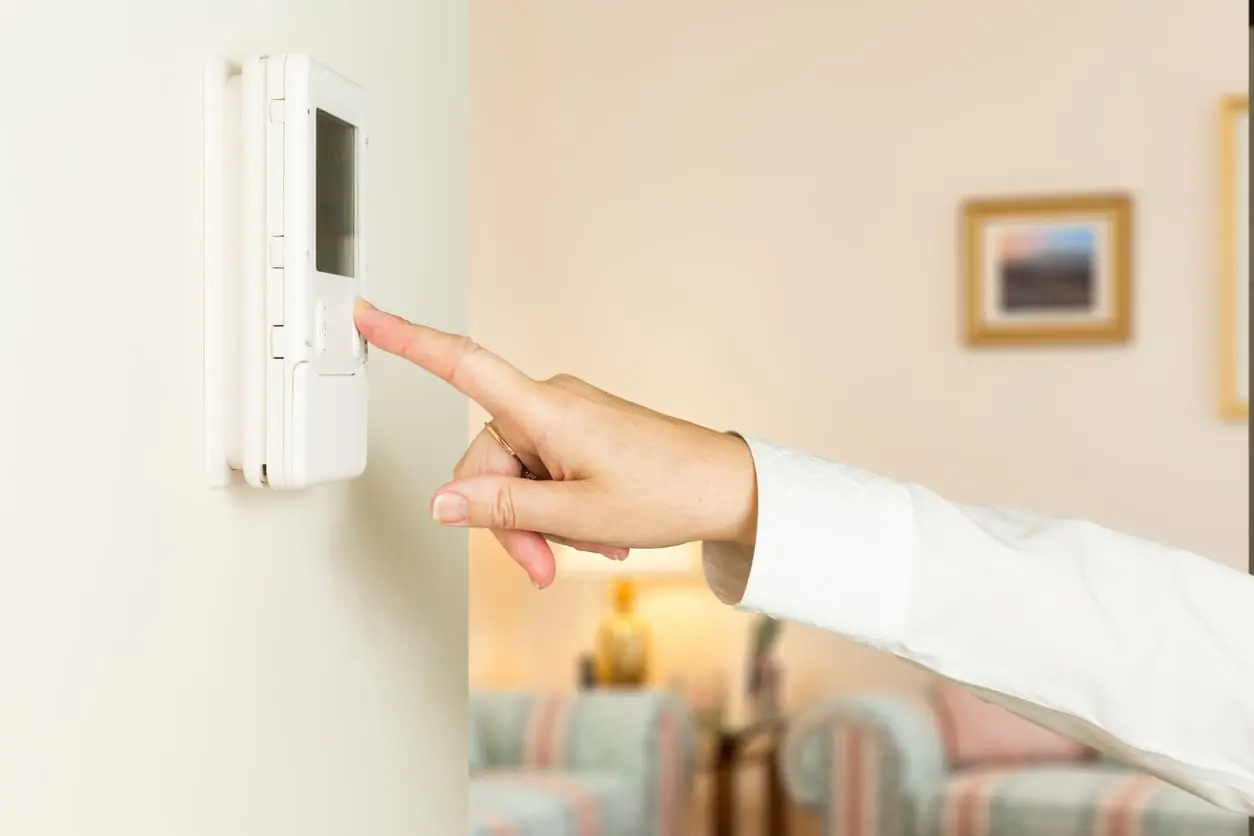
Oftentimes, uneven or inconsistent heating is due to a broken thermostat. You should test all your thermostat settings and ensure they are working correctly.
If you have an older thermostat, consider upgrading to a programmable thermostat for accurate temperature readings and better control of your home’s heating and cooling.
Test Carbon Monoxide Detectors
Maintaining your carbon monoxide (CO) detectors is essential if your furnace runs on gas, especially during the heating season. Carbon monoxide leaks from a broken furnace can be dangerous and even deadly.
You should test and replace the batteries in your home’s CO detectors every six months. Additionally, ensure your furnace’s exterior vents are clear so exhaust gases can safely leave your house.
If all these steps seem too complicated or time-consuming to do on your own, you’re not alone. Western offers comprehensive 30-point furnace maintenance services to homeowners across the Utah Valley. Let us do the dirty work for you.
Benefits of Regular Furnace Maintenance
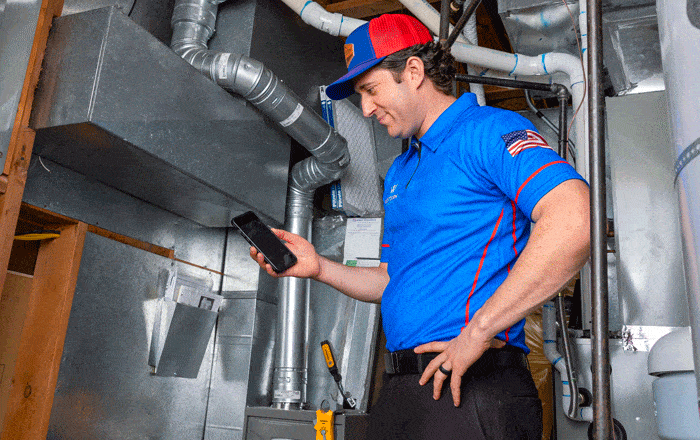
Extended Lifespan
A furnace that is properly maintained lasts longer. When you take care of minor issues before they become more significant, you avoid costly repairs and premature breakdowns.
Better Air Quality
Dust and other pollutants are less likely to circulate throughout your house when your furnace is clean and well-maintained. Clear air filters and ductwork can improve indoor air quality and promote healthier living, lowering the risk of respiratory problems and allergies.
Enhanced Efficiency
Along with better air quality and heating, cleaning your furnace’s components and performing maintenance will improve energy efficiency. When your furnace consumes less energy, you spend less money on utility bills.
Prevention of Breakdowns
Furnace maintenance has one really important job: to prevent costly breakdowns. In the middle of a Salt Lake winter, a furnace breakdown or malfunction is the last thing you want for your home or family. Routine maintenance prevents this from happening.
Consistent Comfort
Your furnace will operate at its best with routine maintenance, providing constant warmth and comfort regardless of how cold the weather gets. Furnaces can present fire hazards and carbon monoxide leaks if they are improperly maintained. Routine inspections catch potential issues early, giving you peace of mind that your home stays safe and warm.
Furnace Maintenance FAQs
How much does furnace maintenance cost?
Because every home and furnace is different, it’s difficult to estimate how much furnace maintenance will cost. The overall price tag of a service is contingent on the size, age, and overall condition of your system. To get an accurate quote, contact Western to discuss your specific needs. Looking to save on furnace and HVAC services? Check out our specials and promotions.
Is furnace maintenance necessary?
Like any mechanical device, your furnace requires regular maintenance to perform at its best. Routine furnace cleaning and service can lead to fewer unexpected breakdowns and more reliable comfort during winter, keeping your home warm and cozy.
How often should my furnace be serviced?
We recommend servicing your furnace at least once a year, preferably in the fall before the heating season. At Western, we offer an annual service plan to help ensure your furnace runs efficiently year-round.
What furnace maintenance can I do myself?
You can follow the checklist above if you feel comfortable, but oftentimes, homeowners choose to have a professional perform these tasks. However, as a tenant or homeowner, you should change your HVAC or furnace air filters every 1-3 months, check vents and air return ducts, and test your thermostat. You can also clean the area around your furnace so it doesn’t catch or accumulate debris.
When should you call a professional for furnace maintenance?
If you’re not comfortable with or inexperienced in HVAC systems, call a professional for furnace maintenance and repairs. Although DIY maintenance can be cost-effective, there are times when professional assistance is required. When you need a reliable and professional team, Western is happy to help.



